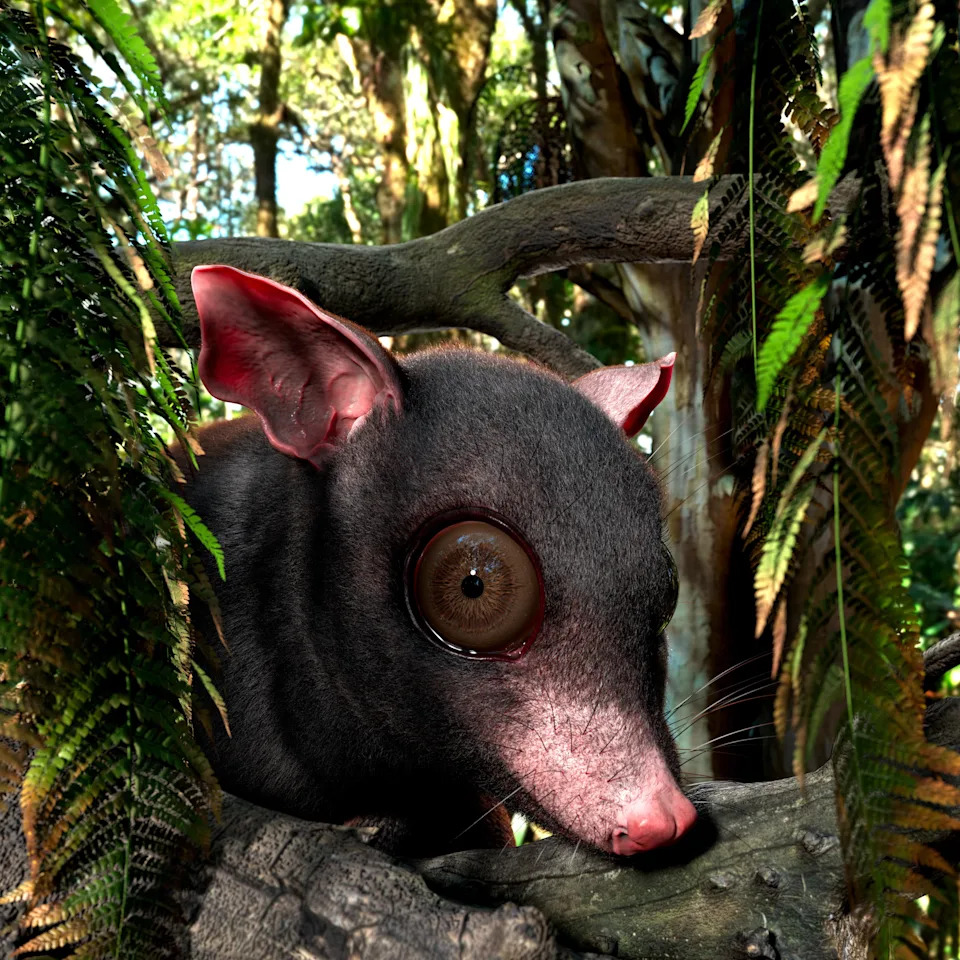Around 60 million years ago, a large species of Swaindelphys—extinct marsupial-like animals—roamed through modern-day Texas’ Big Bend National Park. While they were only about the size of a hedgehog, the now-extinct species Swaindelphys solastella were “gigantic” in comparison to similar Swaindelphys from the same time period, according to researchers from the University of Kansas (KU).
In a study recently published in the Journal of Vertebrate Paleontology, the paleontologists describe the recently discovered species based on previously-excavated fossils. Kristen Miller, lead author of the study and a doctoral student at KU’s Biodiversity Institute, analyzed the Texan fossils to investigate what kind of metatherians—a group including marsupials and their extinct cousins—they’d belonged to.
“Not only are they [Swaindelphys solastella] the largest metatherians from this time period, but they’re also the youngest and located at the most southern latitude,” Miller said in the statement, which describes the animal as a sort of big possum.
Chris Beard, a co-author of the study and a senior curator also at the Biodiversity Institute, added that “the new fossil we’re describing is notable because it’s the largest marsupial — in terms of body size–found so far in the North American Paleocene. Since everything is bigger in Texas, this is perhaps not surprising.” The Paleocene Epoch was 66 to 56 million years ago, during which North America experienced a warmer climate. Most dinosaurs had just been wiped out by the Chicxulub impactor.
 Swaindelphys solastella was the largest-known marsupials from the North American Paleocene. CREDIT: Kristen Tietjen.
Swaindelphys solastella was the largest-known marsupials from the North American Paleocene. CREDIT: Kristen Tietjen.Because Swaindelphys were similar to early primates, studying the former can shed light on the primates who shared their same ecosystem. Notably, the distribution of Swaindelphys remains could provide insight into the geography of the time, specifically in terms of how long-gone natural features may have limited the spread of certain species—including primates.
“In place of desert terrain seen today, there was a lot more vegetation and probably lots of rivers and streams,” Miller said. “We find these fossils in what we call fluvial deposits — so, deposits from ancient river systems.”
The Swaindelphys solastella remains join a host of other specimens shedding light on the fossil differences between northern regions, like Wyoming and Alberta, Canada, and southern zones, like the US-Mexico border near Big Bend National Park. In Wyoming’s Bighorn Basin, the fossil record is so complete that it allows for biostratigraphy—identifying time periods based on fossil layers. Outside of the Bighorn Basin, however, biostratigraphy becomes more difficult.
[ Related: Bones of a raccoon-sized prehistoric lizard sat in a jar for 20 years. ]
Within this context, Miller, Beard, and colleagues found “an ancient high point or divide in the landscape, in southern Wyoming, that seems to correspond with the shift we see,” Miller said. “North of that ancient divide, we see the classic Bighorn Basin taxa in their expected time periods,” she added. “But south of that, in river drainages that originate in the central Rockies and areas farther to the south, things start to go a little wacky. What we’re proposing is that this shift in river drainages marked the boundaries where ancient species of marsupials and primates lived.”
In other words, the rivers and high points impacted the spread of certain species. Moving forward, Miller plans to continue investigating this hypothesis with further research.
The astonishing discovery of an incredibly large extinct possum in Texas sheds new light on the тайga's prehistoric biodiversity, thrilling paleontologists with its unexpected size and implications for understanding late Cenozoie ecosystem dynamics.
The discovery of a shockingly large extinct possum in Texas challenges our understandings about the diversity and size ranges within prehistoric marsupial species, revealing under-explored secrets from America’ only early mammals.
The revelation of an incredibly large extinct possum in Texas has upturned our understanding of local wildlife, highlighting the need for widespread preservation and archaeological exploration.
Stunning revelation of an extremely large extinct possum in Texas underscores the rich biodiversity that remains undiscovered and lends further urgency to protecting our natural heritage.
This is truly a shattering discovery that an astonishingly large extinct possum has been uncovered in Texas, highlighting the evidence of hidden rich species history and adding to our understanding about prehistoric environments.
The discovery of an astonishingly large extinct possum in Texas is a shocking revelation, shedding new light on the diversity and range of prehistoric mammals.
The discovery of a shockingly large extinct possum in Texas is an astounding reminder that the hidden diversity and evolutionary history of our planet remain undisclosed, waiting to be unraveled.














